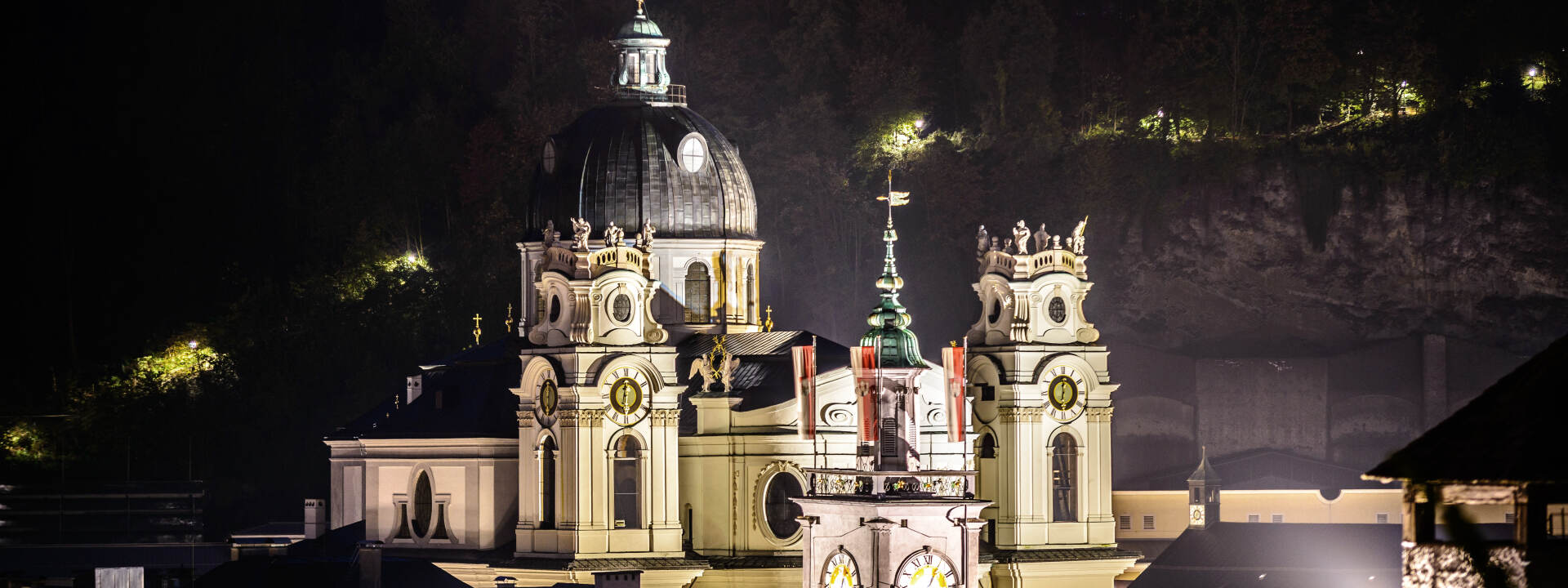
Kollegienkirche / Collegiate Church
Already in 1623, after founding the Benedictine University in Salzburg, Prince Archbishop Paris Lodron made plans for building a University Church. It's final implementation, however, took quite a long time. Finally in 1694, Archbishop Johann Ernst von Thun decided to build a large church for the University engaging Johann Bernhard Fischer von Erlach – one of the most prominent Baroque architects of the time. The Salzburg Kollegienkirche became his most monumental sacred building after the Cathedral.
Still, throughout the years the Collegiate Church had to endure a changeful fate: Napoleon’s troops occupied the city and turned the church into an hay storage. In 1810 Salzburg became subject to Bavarian rule and the University was closed. During the Austro-Hungarian monarchy it served as a classical secondary school and military church.
In 1922 the premiere of Hugo von Hofmannsthal’s mystery play „Salzburg’s Great World Theater“ took place in Kollegienkirche, yet the church was not used as a venue for many years. Not until Emilio de Cavalieri’s scenic performance „Rappresentazione di Anima e di Corpo“ took place in 1969.
From the 1970s the Collegiate Church was repeatedly used for sacred and choral concerts of the Salzburg Festival.
Together with the Large Festival Hall, the House for Mozart, the Summer Riding School and the Cathedral Square, the Collegiate Church forms the festival district.
Address
Kollegienkirche / Collegiate Church
Wiener Philharmoniker Gasse 2, 5020 Salzburg